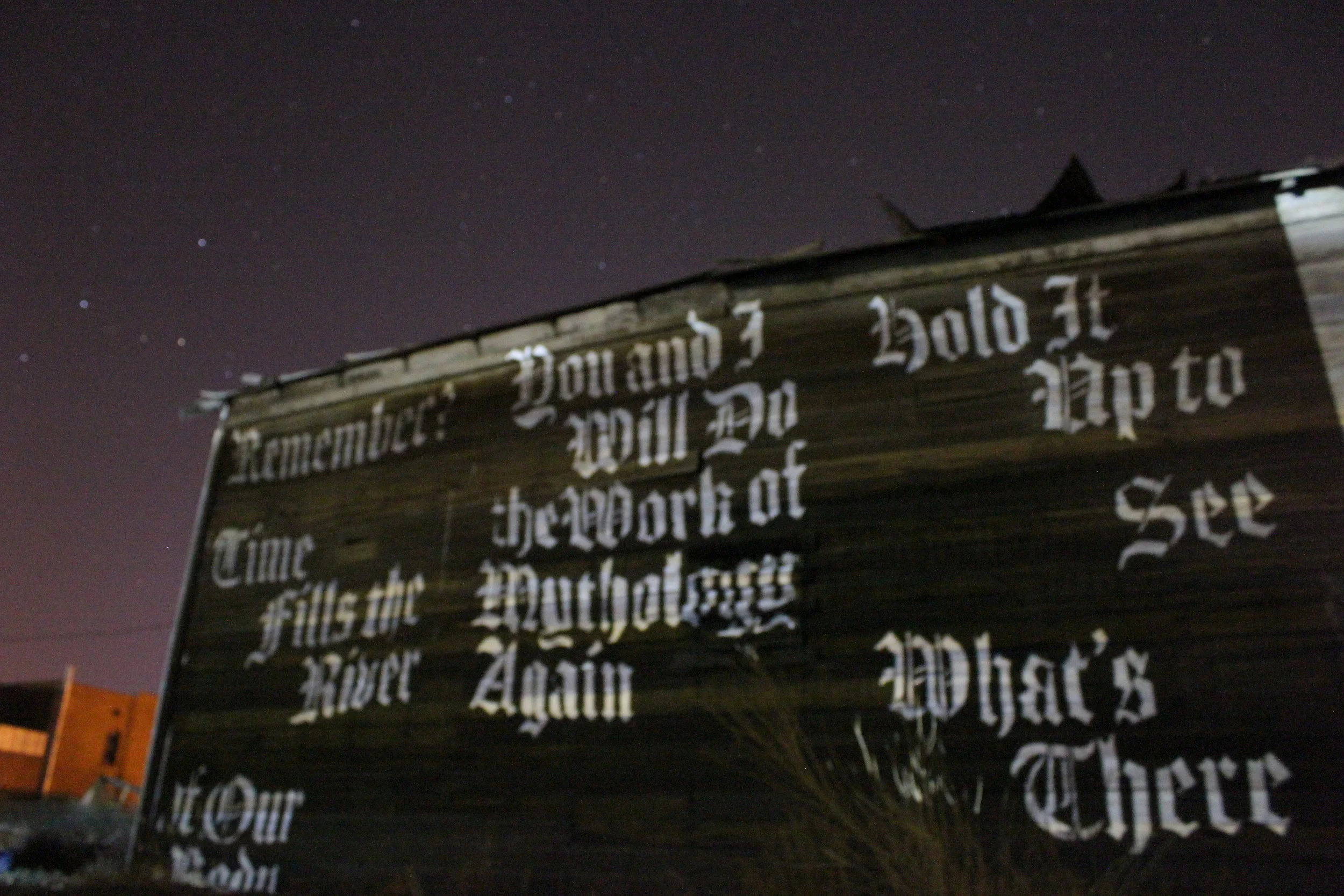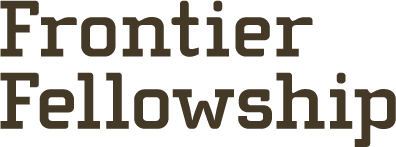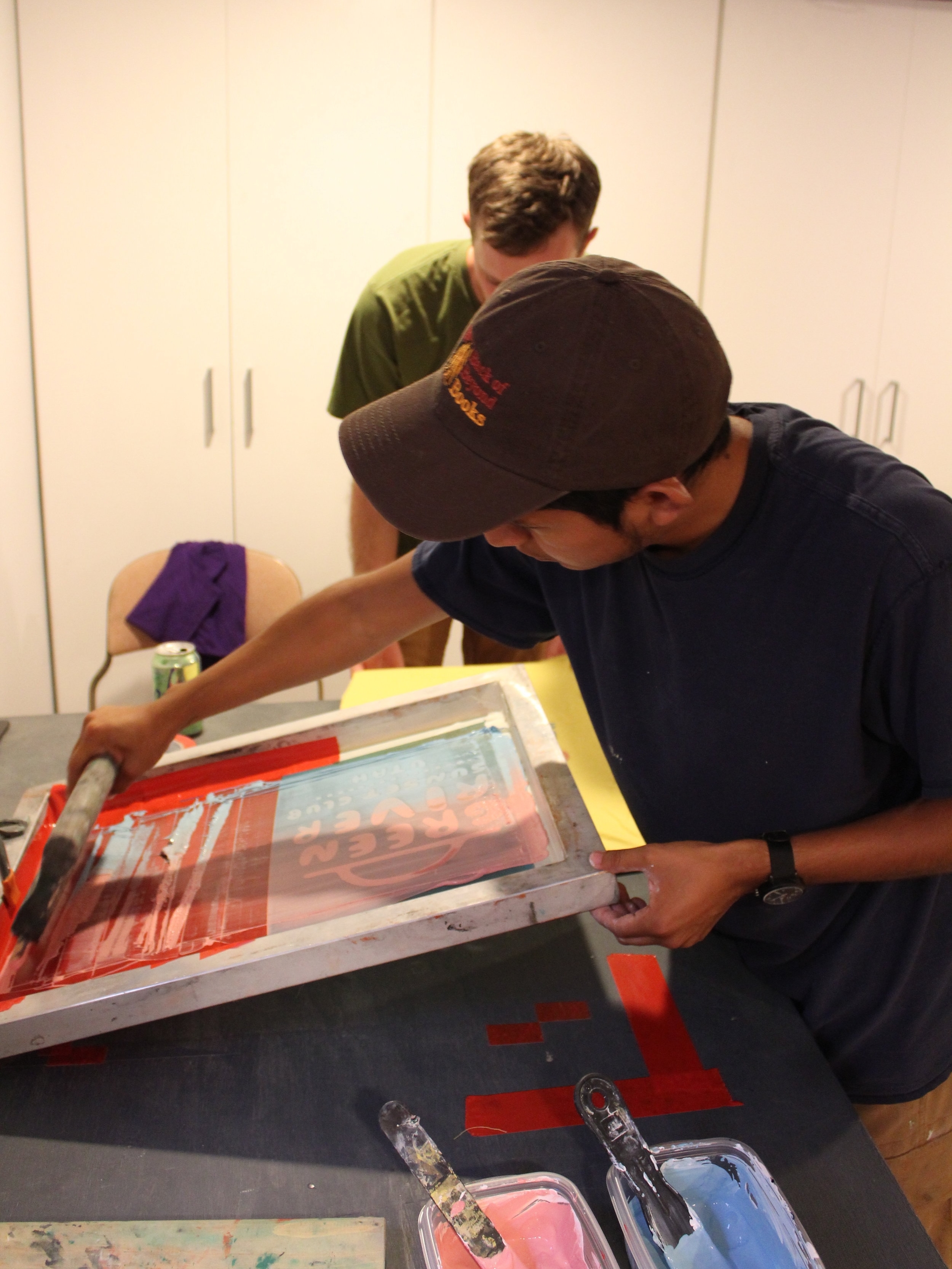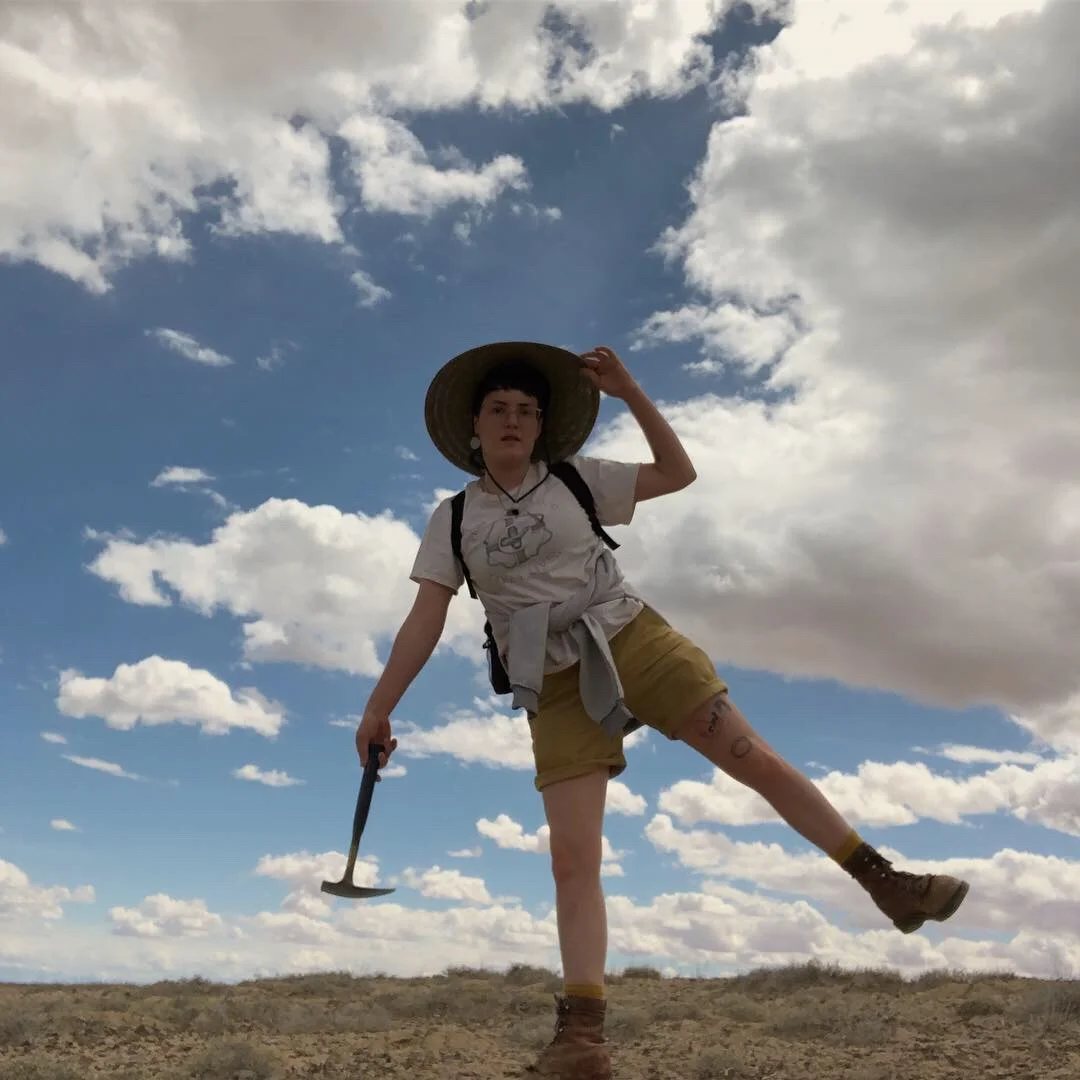Dasha Bulatova & Jonathan Herrera

This summer, Epicenter hosted its first Emerging Artist Frontier Fellowship, bringing together two artists who did not previously know each other. Printmaker Jonathan Herrera from Minneapolis and writer Dasha Bulatova from Oakland were invited by Epicenter’s “matchmakers” to spend a month living and working in Green River, towards the goals of collaborating on both studio and community projects and honing their individual artistic practices.
In some ways, the two artists could not have been more different.
Jonathan, a 2017 graduate of the Minneapolis College of Art & Design, was in the midst of establishing a thriving arts practice, already having participated in several exhibitions and arts residencies. Dasha, on the other hand, was just beginning to return to her writing practice after developing a career as a practitioner of speech and language therapy with individuals with neurological conditions.
Both of them, however, came to Utah with a posture of curiosity, gratitude, and excitement. Having worked primarily in different physical mediums, they sought intersections and expansions of meaning in the conceptual realm, and then challenged each other to reframe and heighten the possibilities of material exploration.
Over the weeks, amid lots of exploration of space and community including daily joint lunches at La Pasadita, runs to the Melon Vine, swims at the beach, hikes at slot canyons, and summer monsoons, Jonathan and Dasha’s projects took shape and found bodies among all of the materials that Green River generously offered: stone, light, air, water, paper, language. The final work consisted of a collaborative exploration between print and text incorporating light and earth. The text, developed through various site-specific studies, was a product of workshopping poetry back and forth between Dasha and Jonathan, blending the lines of authorship. Words inspired by the locality of Green river were printed on rocks to produce new mythologies through poetry and engagement.
The final week was a blitz of daytime installation and documentation in 105 degree heat, culminating in a late-night installation and performance at Black Dragon Canyon, in the San Rafael Swell, just steps away from mythic and ancient rock art. Their final day, Jonathan and Dasha presented their projects to Green River community members and installed a light performance on the back of an abandoned wooden shed next door to Epicenter.
Jonathan climbing Ratio during Week One
Above: Many studio hours were spent transferring hundreds of words onto river rocks, often with a thunderstorm roaring outside
Below: Final installation of Tu y Yo/You and I
WORD CACHE #1-5:
xerox transfer with gel medium, stone, wooden crates
A series of site-specific interactive installations intended to materialize the tension between natural and built spaces found in liminal places like Green River, on the threshold of wild and human. Five sets of words in English and Spanish were printed using a gel-medium transfer technique on smooth river rocks found around town and at the beach. These were installed at various locations inviting visitors to interact with them by arranging them to form phrases or sentences. Both human and natural forces will intervene with the caches by taking them, throwing them, or eroding the words by wind and air. They will always be in flux. Visitors to these sites are encouraged to send photos of the language they assemble to wordcache.greenriver@gmail.com.
The questions raised by this project include: How can language both particularize and expand the narrative power of a place? Does forming a phrase or sentence assist or alter a memory of experiencing a place? How does the act of naming change perception and interaction, both in physical, cognitive, and emotional realms? In addition, by literally naming a rock, how do we balance both the colonizing impact of ascribing language to natural, extra-linguistic objects in the world with the sublime effects of poetic image?
Printed rocks drying and awaiting organization into site-specific word caches.
Word Cache #1: Crystal Geyser
Word Cache #2: Stone Cabin
Word Cache #3: Swasey’s Beach
Word Cache #4: Goose Point
Word Cache #5: Green River Library
TÚ Y YO/YOU AND I:
canvas stencil print using light on shed, wood frame, clamps
A three-stanza poem in which each stanza comprises a light stencil and is interchangeable in its position in the poem. Several experimental temporary installations on buildings and natural formations. AmeriCorps VISTA and artist Grace Whatley helped Jonathan and Dasha haul and set-up wooden frames made by previous fellow Spencer Kroll to which canvas stencils were clamped. Natural light or flashlights projected and suspended the language. Ash hovered in the air from nearby wildfires and wild deer careened through the canyon, adding to the ghostly atmosphere.
Projecting onto the walls at Black Dragon Canyon
Waiting for hours for the perfect alignment of the sun’s angle and its golden hue
HEADSTONES:
sandstone, gel medium xerox transfer
Selected lines and stanzas from poems written by Utah-based poets or poems about Utah were printed on scrap sandstone slaps. Installed like headstones in the natural environment, the words on these monuments are intended to erode and dissolve rather quickly. How do these physical installations of language function as fences or defined boundaries for a place that may otherwise be absent of overt language? How do they enrich or otherwise modify the experience and memory of a place? Utah Poet Laureate Paisley Rekdal and western poet Charles Hood gave permission to use their work. The excerpt from Charles Hood comes from his book Red Sky, Red Water: Powell on the Colorado, which parallels and draws from John Wesley Powell’s journals as he traveled down the Colorado and Green Rivers, an expedition that certainly defined the region for white settlers.
Charles Hood at the Crystal Geyser: “The river is marrow hidden beneath cliffs red as coyote squash / as if only serving to reiterate that here / the cushion of meat / is useless.”
Paisley Rekdal at the Stone House: “Once I thought that these filigrees / had always existed inside us, showing / the pattern from which we are made: not a new / version of ourselves but the original” (from "Olive Oatman in Texas”)
Paisley Rekdal at Goose Point: “Once, I was afraid / of being changed. Now that is done.”
CAIRNS:
Using printed rocks that were not incorporated into word caches, Jonathan and Dasha built cairns of language along natural or built features during their forays into the desert. Occasionally, they would add words to the tops of existing cairns. One striking structure was a natural gas pipeline that ran along the dirt road into Crystal Geyser. It appeared to float and bounce along the sand and rock, weaving a seam back and forth across the landscape, all at once fused and at odds with the land. Occasionally it would announce itself with painted colors, right angles, and engineered metal formations. In the same way, cairns built by desert dwellers or hikers denote a familiar, known part of the environment under the guise of naturalness. Cairns are signs that want to hide from themselves.
“beloved body” at the Crystal Geyser
“place is practice" along natural gas pipeline
“pesado,” atop existing cairn
“todavía,” at Stone House
at Swasey’s Beach
lluvia fuerte: along natural gas pipeline
“…home is a haunt of changed landscape you are…” atop existing cairn
in the Green River
“these clouds will not end but labor does,” at Swasey’s Beach
Jonathan and Dasha also supported each other in the production of individual projects inspired by their collaborative work. Founding Frontier Fellow and artist Charlotte XC Sullivan facilitated weekly discussions on topics such as defining community and “ground-truthing” to bolster self-reflection and connection.
Lo Que Tu Me Deseas Días Te Lo Duplicara” is a pennant Jonathan created, modeling it after a sign displayed at the taco truck.
Dasha wrote daily poems along the themes of placemaking and narrative memory that will be assembled into a chapbook. She also worked a couple of shifts at the thrift store and joined Maria, Jarod, and Grace on a trip to the Cedar City Shakespeare Festival and Zion and Bryce Canyons to commemorate Jarod’s last week in Green River before moving on to new adventures. Jonathan spent his morning reading and writing, and assisted designer Jarod Hamm to finish a batch of screen printed t-shirts. In the end, Epicenter used a special sixth sense to bring together two artists in the service of a deep collaboration that both hope will continue for years to come.
READING LIST:
Lucy Lippard - Undermining and The Lure of the Local: Senses of Place in a Multicentered Society
Charles Hood - Red Sky, Red Water: Powell on the Colorado
Wendell Berry - Window Poems
Willy Vlautin - Northline
Robert MacFarlane - Landmarks
Tyehimba Jess - Olio





















